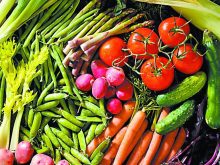Survey finds that Canadians continue to seek cheaper options in the grocery store as they grapple with food inflation
Glacier FarmMedia – The rate of inflation has slowed in Canada, but a report from a major food research institution shows prices have a major effect on what goes into consumers’ grocery carts.
The Canadian Food Sentiment Index, released Oct. 10 by Dalhousie University’s Agri-Food Analytics Lab, said Canadians have changed shopping habits significantly in the face of food price inflation.
The report was based on responses from more than 3,000 Canadians, and the university plans to repeat the effort bi-annually. It provides a picture of food issues across the nation, said Sylvain Charlebois, the institution’s senior director and food system commentator. The lab has done several surveys over the years, but the October effort was the most expansive.
Read Also

Feds propose overhaul of chronic wasting disease control program
Chronic Wasting disease control program getting updated by Canadian Food Inspection Agency with feedback encouraged from producers.
“A lot of factors can actually impact sentiments, like prices, for example. But we explored a lot of different things in this report — values, beliefs, trust,” he said.
Dalhousie University connected with Purdue University in Indiana to create the survey, Charlebois added. The U.S. school conducts a consumer sentiment overview every month but Dalhousie saw less value in a month-by-month analysis.
“Frankly, when you look at theirs, things don’t really change all that much from month to month. That’s why we’re doing every six months.”
Food prices have increased by 27 per cent since 2019, and 84 per cent of respondents cited food as the expense that has surged most within the past year. Nearly half — 48.2 per cent — reported looking for more sales and discounts, while also using coupons, shopping at less expensive stores or switching to generic brands.
Twenty-two per cent said they are buying fewer non-essential foods, such as ice cream, and others are opting for bulk or staple foods like pasta and beans.
“A lot of people are struggling at the grocery store,” Charlebois said.
Per capita spending on food has shown only a modest increase. There was a notable spike at the onset of the COVID-19 pandemic, but expenditures have since stabilized at just above pre-pandemic levels.
Restaurants suffered during COVID-19. The report noted restaurant spending dropped to less than $40 per capita in early 2020 due to pandemic-related closures and restrictions. Today, that spending has largely bounced back, Charlebois said, even with the surge in grocery prices.
“People are still going out to the restaurant. That surprised me.”
Food insecurity is a growing challenge, especially among younger Canadians. Nearly half of generation Z — 46 per cent — reported drawing from savings or borrowing money to afford groceries, the most of any age class. Only 13 per cent of the oldest generation, those born before 1946, said they needed financial help to buy food.
Affordability was reported as a main concern for 47.3 per cent of respondents. Nutrition, at 24.9 per cent, and taste, at 16.7 per cent, also scored highly. Many reported checking nutritional labels, opting for local foods and taking steps to reduce food waste.
Farmers still enjoy a lot of consumer trust, according to survey results. They rated as the most trusted in the food system, with a score of 3.69 out of five. They were closely followed by Health Canada and the Canadian Food Inspection Agency.
“The farmers are number one, but that wasn’t surprising,” Charlebois said. “People tend to trust farmers, and Health Canada as well.”
Grocers had a far less sunny perception among consumers. Major grocery chains received the lowest trust scores.
The report also showed that most Canadians believe food prices are rising faster than government estimates. Over 54 per cent of respondents said they think food inflation is higher than official reports.
“(It) surprised me … how many people don’t believe Statistics Canada and inflation data,” Charlebois said.
He added that updates to the sentiments report should be tracked to see how they shift in relation to market fluctuations.
“That’s basically what we’re trying to do with all these metrics, all these aspects (that are) included in the survey. There’s a lot of questions.”
The next survey results will be released in April.
One takeaway from the current report is a more confident and positive outlook among Canadians. Charlebois said he’ll be interested to see if that trend continues, since that will likely affect consumer behaviour.
“When we release our second one, we’ll actually see an evolution. We’ll see exactly how Canadians feel about certain things.”
















